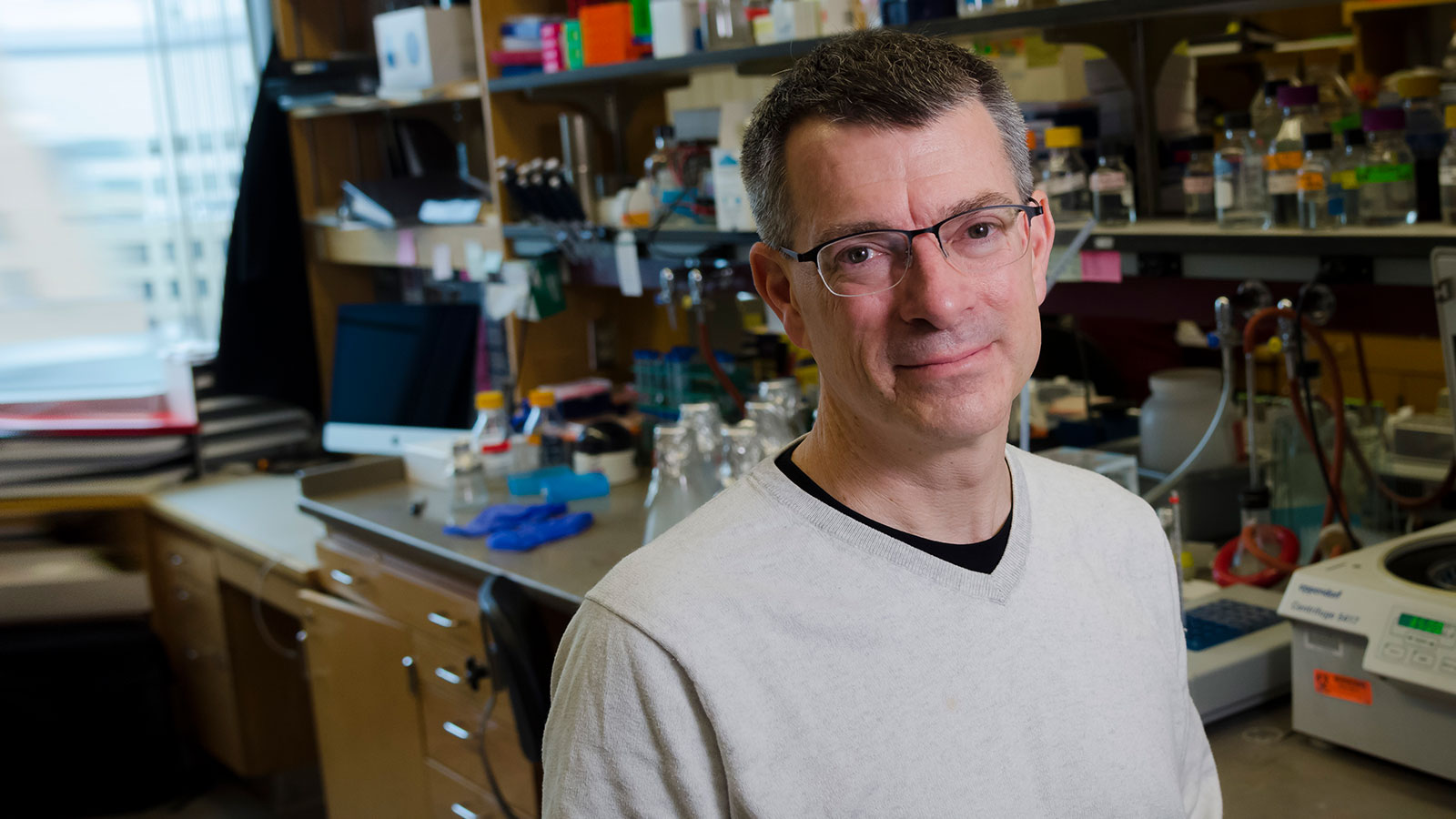Education
- PhD, 1990, University of California, Berkeley
- BS, 1985, Integrated Science Program and Biochemistry, Molecular Biology and Cell Biology, Northwestern University
Research Summary
We focus on the events that occur at the starting points of chromosome duplication. These DNA sequences — called “origins of replication” — are found at multiple sites on each eukaryotic chromosome and direct the assembly of replisomes, which replicate the DNA on both sides of the origin. We study this assembly process to understand how chromosomes are replicated, and how these events are regulated during the cell cycle to ensure genome maintenance.Awards
- National Academy of Sciences, Member, 2017
- National Academy of Sciences Award in Molecular Biology, 2009
- Howard Hughes Medical Institute, HHMI Investigator, 2000
Key Publications
- Mechanism and timing of Mcm2-7 ring closure during DNA replication origin licensing. Ticau, S, Friedman, LJ, Champasa, K, Corrêa, IR Jr, Gelles, J, Bell, SP. 2017. Nat Struct Mol Biol 24, 309-315.
doi: 10.1038/nsmb.3375PMID:28191892 - Single-molecule studies of origin licensing reveal mechanisms ensuring bidirectional helicase loading. Ticau, S, Friedman, LJ, Ivica, NA, Gelles, J, Bell, SP. 2015. Cell 161, 513-525.
doi: 10.1016/j.cell.2015.03.012PMID:25892223 - Eukaryotic origin-dependent DNA replication in vitro reveals sequential action of DDK and S-CDK kinases. Heller, RC, Kang, S, Lam, WM, Chen, S, Chan, CS, Bell, SP. 2011. Cell 146, 80-91.
doi: 10.1016/j.cell.2011.06.012PMID:21729781
Recent Publications
- An Orc6 tether mediates ORC binding-site switching during replication origin licensing. Driscoll, D, Friedman, LJ, Gelles, J, Bell, SP. 2025. Proc Natl Acad Sci U S A 122, e2510685122.
doi: 10.1073/pnas.2510685122PMID:41055997 - An Orc6 tether mediates ORC binding site switching during replication origin licensing. Driscoll, D, Friedman, LJ, Gelles, J, Bell, SP. 2025. bioRxiv , .
doi: 10.1101/2025.05.09.652650PMID:40462942 - Cell integrity limits ploidy in budding yeast. Barker, J, Murray, A, Bell, SP. 2025. G3 (Bethesda) 15, .
doi: 10.1093/g3journal/jkae286PMID:39804723 - A noncanonical GTPase signaling mechanism controls exit from mitosis in budding yeast. Zhou, X, Weng, SY, Bell, SP, Amon, A. 2024. Proc Natl Acad Sci U S A 121, e2413873121.
doi: 10.1073/pnas.2413873121PMID:39475649 - A noncanonical GTPase signaling mechanism controls exit from mitosis in budding yeast. Zhou, X, Weng, SY, Bell, SP, Amon, A. 2024. bioRxiv , .
doi: 10.1101/2024.05.16.594582PMID:38798491 - Distinct RPA functions promote eukaryotic DNA replication initiation and elongation. Pike, AM, Friend, CM, Bell, SP. 2023. Nucleic Acids Res 51, 10506-10518.
doi: 10.1093/nar/gkad765PMID:37739410 - Changing protein-DNA interactions promote ORC binding-site exchange during replication origin licensing. Zhang, A, Friedman, LJ, Gelles, J, Bell, SP. 2023. Proc Natl Acad Sci U S A 120, e2305556120.
doi: 10.1073/pnas.2305556120PMID:37463200 - Regulation of replication origin licensing by ORC phosphorylation reveals a two-step mechanism for Mcm2-7 ring closing. Amasino, AL, Gupta, S, Friedman, LJ, Gelles, J, Bell, SP. 2023. Proc Natl Acad Sci U S A 120, e2221484120.
doi: 10.1073/pnas.2221484120PMID:37428921 - Changing protein-DNA interactions promote ORC binding site exchange during replication origin licensing. Zhang, A, Friedman, LJ, Gelles, J, Bell, SP. 2023. bioRxiv , .
doi: 10.1101/2023.06.16.545300PMID:37398123 - Regulation of replication origin licensing by ORC phosphorylation reveals a two-step mechanism for Mcm2-7 ring closing. Amasino, A, Gupta, S, Friedman, LJ, Gelles, J, Bell, SP. 2023. bioRxiv , .
doi: 10.1101/2023.01.02.522488PMID:36711604
Multimedia

